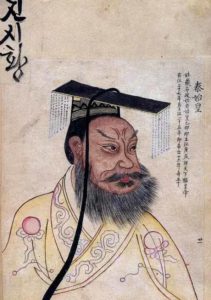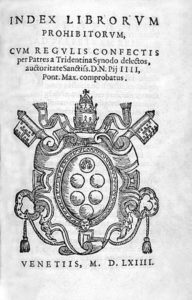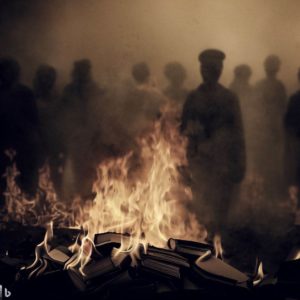Table of Contents
- Introduction
- Burning Books 213 B.C.
- Persecuting Philosophers
- Banned Books & Bible
- Books lost forever
- Inquisition Censorship
- Index Librorum Prohibitorium
- Copernicus & Galileo
- Darkness in Enlightenment
- Revolution & Banned Books
- Colonialism & Book Bans
- New Nation Censorship
- Nazi Germany Book Burning
- USSR Banned Books
- McCarthyism Book Banning
- 21st Century Book Bans
- Banned Books Battles
- Digital Age Book Banning
- World Wide Book Banning
- Book Banning is Bad
- The Future of Book Banning
- Looking Back in History
- Discover New Worlds
History of Banned Books
Introduction to Banned Books
Banning books means not allowing the possession, distribution, or reading of specific books. Governments, religious groups, and educational institutes usually do this. They believe the content of these books might be inappropriate, offensive, or threatening. Censored books cover a range of topics, from politics to religion.
The Big Picture
History shows us that societies have long censored books. They do this to reflect their changing values and beliefs. Banning books suppresses dissent. Moreover, it controls information and reshapes cultural values. Today, book banning still makes headlines.
Going way back to ancient times, extreme cases of book burning existed.
In 213 BC, Chinese Emperor Qin Shi Huang executed the “Burning of Books and Burying of Scholars”. He wanted to end intellectual discussions. Meanwhile, in Greece and Rome, the state banned books that opposed their beliefs. They also exiled or executed philosophers.
During the Renaissance and Enlightenment, book banning continued. For instance, the Catholic Church introduced its Index Librorum Prohibitorum. As a result, they banned thinkers like Copernicus and Galileo. Then, the Enlightenment brought a focus on rational thought and free speech. However, this led to even more book bans.
In the 1800s, rising nationalism caused more book bans. Governments censored books that criticized them or promoted revolution. Colonial powers also banned books that could threaten their control.
The twentieth century saw extreme book bans, especially under dictatorships. Nazi Germany and Stalinist USSR practiced harsh censorship. However, democratic nations didn’t stay silent. For example, during the McCarthy era, authorities banned books linked to communism.
Now, in the 21st century, book banning still exists. In the USA, values continue to shift. Schools and libraries ban books for explicit content, offensive language, or controversial ideologies. Especially if they deem them inappropriate for young readers. We’ll delve deeper into the history of banned books in upcoming articles.
Church says the sun goes around the earth
One of the most infamous cases of book banning involved the scientist Galileo Galilei. His book, “Dialogue Concerning the Two Chief World Systems,” which presented the heliocentric view of the universe, landed him in trouble with the Church. The Church, holding to the geocentric model, declared Galileo’s book heretical and placed it on the Index in 1633. Galileo himself faced the Inquisition and the Church put him under house arrest for the rest of his life.
Despite its restrictive nature, the Index had varied effects. While it did curb the dissemination of certain ideas within Catholic regions, in many cases, it only sparked curiosity and increased demand for the banned books. Some of these texts found a broader readership in Protestant countries, where the Church’s jurisdiction did not reach.
After four centuries, Pope Paul VI abolished the Index Librorum Prohibitorum was officially abolished in 1966. He was recognizing the need for intellectual freedom and the impracticality of maintaining such a list in the modern world. However, its legacy as a potent symbol of religious censorship persists.


